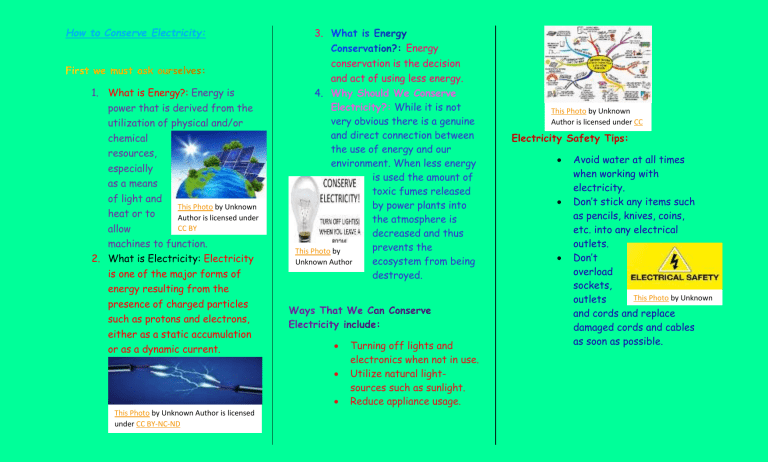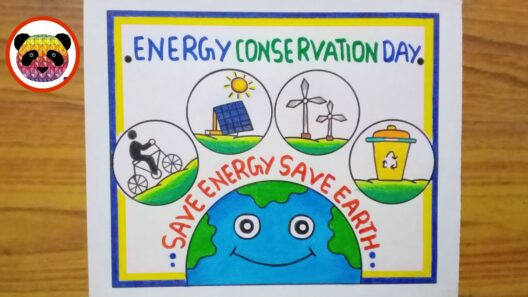Electricity is woven into the fabric of our daily lives. Can you envision a day without it? The truth is, conserving electricity is not just about reducing your carbon footprint; it’s also a savvy financial strategy. Imagine slashing your energy bills while simultaneously contributing to a more sustainable planet. This presents an intriguing challenge: how can you effectively conserve electricity and cut your monthly costs? Let’s explore a multifaceted approach to achieve this goal.
Firstly, one of the most effective means of conserving electricity lies in the optimization of energy usage in your home. One starting point is to conduct an energy audit. This process involves examining your home for inefficiencies. Check for drafts around windows and doors. Seal any leaks with weatherstripping or caulking. Such small adjustments can lead to monumental savings.
Next, consider switching to energy-efficient appliances. The market is inundated with models that bear the ENERGY STAR label. These devices consume less energy than their conventional counterparts. For example, an ENERGY STAR-rated refrigerator uses around 15% less energy than standard models, which can pay off in the long run. Furthermore, when it’s time to replace older appliances, opt for those designed with energy conservation in mind.
Speaking of replacements, how about your lighting choices? Traditional incandescent bulbs are notorious energy hogs. Instead, transition to compact fluorescent lamps (CFLs) or light-emitting diodes (LEDs). While the initial investment may be slightly higher, these bulbs last significantly longer and use a fraction of the energy. The result? A substantial decrease in your electricity consumption. Even adjusting the brightness of your lighting can yield savings—using dimmers can optimize the light output based on your needs.
Moreover, the daily habits within your household play a pivotal role in energy conservation. Simple changes can yield significant results. For instance, turn off lights in unoccupied rooms and unplug devices when they’re not in use. Phantom loads—energy used by devices when they are switched off but still plugged in—can account for up to 10% of your energy costs. Implementing smart power strips can alleviate this issue by allowing you to cut power to multiple devices at once.
Another fascinating concept involves using your appliances more strategically. Are you aware of the best times to use your washing machine or dishwasher? Many electricity providers offer lower rates during off-peak hours. By adjusting your usage patterns, you can take advantage of these reduced rates. This, too, can contribute to lowering your monthly costs.
Additionally, consider your heating and cooling systems. Thermostat settings have a profound impact on energy consumption. During the winter, set your thermostat to 68°F while awake and 60°F when sleeping or away from home. In the summer, setting it higher and utilizing fans can create a similar level of comfort without the energy expenditure. Programmable thermostats can automate these adjustments, further enhancing efficiency.
Ventilation is another area often overlooked. Ensure that air vents are unobstructed and clean. Regular maintenance of your HVAC system is essential to keep it functioning optimally. This may include changing filters at least every three months. Consider hiring a professional for an annual inspection to identify any underlying issues.
Natural solutions abound as well. Employ passive solar energy principles by opening curtains during sunny days to warm your space and closing them at night to retain heat. This dual approach minimizes reliance on heating and cooling systems and enhances the comfort of your living space.
Consider your water heating system, which can be a significant contributor to monthly bills. Lowering the thermostat of your water heater to 120°F can reduce your energy consumption. Insulating your water heater and the pipes connected to it also minimizes heat loss and increases efficiency. Furthermore, consider using cold water for laundry whenever feasible. Advances in detergent formulas allow clothes to wash effectively in lower temperatures.
Finally, engaging with your community can amplify your conservation efforts. Join local initiatives aimed at promoting energy efficiency. Many utility companies offer rebates for home improvements aimed at reducing energy consumption. Moreover, by sharing tips and resources, you foster a community ethos focused on sustainability. Challenge your neighbors to take part in a friendly competition around energy savings—who can reduce their bills the most?
Ultimately, conserving electricity is a multifaceted endeavor that combines strategic adjustments, innovative technologies, and community engagement. By systematically implementing these strategies, not only do you stand to benefit from reduced monthly costs, but you also contribute to a more sustainable future. The question is: are you ready to rise to the challenge and embrace these changes? Every small step counts towards making a substantial difference for our planet and your pocketbook.







